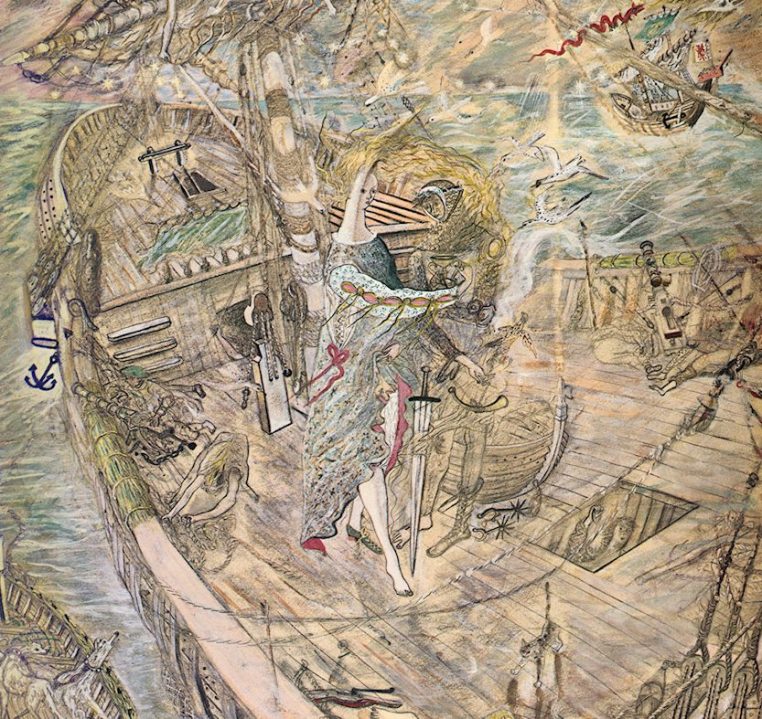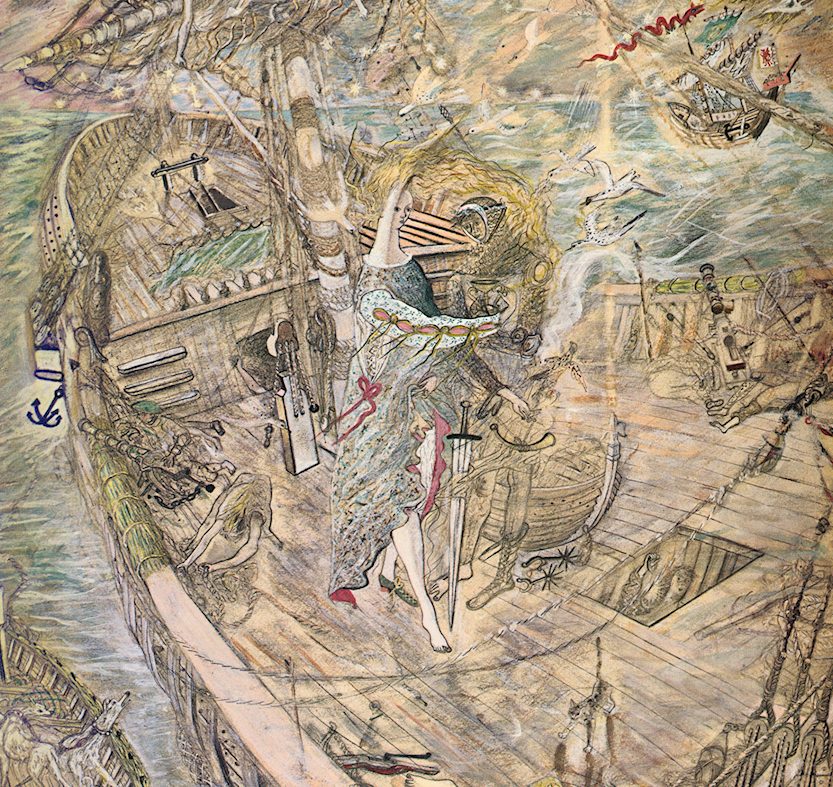To bleak, boarded-up Margate — and a salt-and-vinegar wind that leaves my face looking like Andy Warhol’s botched 1958 nose-peel — to see Journeys with ‘The Waste Land’ at Turner Contemporary. The exhibition has been organised by a group of local residents, who selected the exhibits, designed the layout, and wrote the exhibition texts. In ‘The Waste Land’, some of it written in the Nayland Rock seafront shelter, Eliot writes: ‘On Margate Sands./ I can connect/ Nothing with nothing.’ The local research group have connected Eliot’s text with everything — some duds, some successes.
For example, in ‘The Fire Sermon’, a gossipy, gripping, ungrammatical female voice says: ‘It’s them pills I took, to bring it off’. So we have three Paula Rego pictures, ‘Abortion Sketches’ (1998). One in a hospital (the bed leg has a castor); another clearly illegal, showing a schoolgirl, with a tie and gathered green skirt pleats, squatting over a plastic bucket. I find Rego’s figures a touch Brobdingnagian and coarse — think of her over-emphatic portrait of Germaine Greer — but her candour is exemplary and unflinching. (‘The Policeman’s Daughter’ is an oblique depiction of fisting.) This abortion triptych is a virtuoso use of chalk — a revelation invisible in reproduction. You are going to have to go to Margate. All three pictures use chalk as if it were oils and achieve some incomparable textures. There is a plush velvet chair like a burgundy bulrush, parallel to the squatting girl, with a ragged gash in the upholstery corresponding to the vulva. The flesh of her thighs is exact. There is a check dress intricately captured in this very testing medium. A floral bedspread might be Degas. But the tour de force is a brown moulded plastic chair, which Rego breathtakingly sets before us in all its hideous banality.

Exemplary candour: detail from Paula Rego’s ‘Abortion Sketches’ (1998)
I happen to think that the first world war is peripheral to Eliot’s poem — academics find it impossible to imagine that this cataclysm didn’t make its mark on all subsequent masterpieces — but the exhibition supplies several ‘relevant’ art works.









Comments
Join the debate for just £1 a month
Be part of the conversation with other Spectator readers by getting your first three months for £3.
UNLOCK ACCESS Just £1 a monthAlready a subscriber? Log in